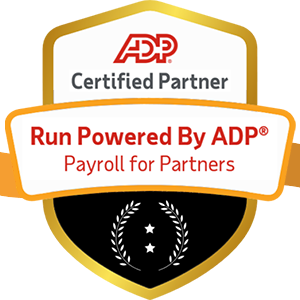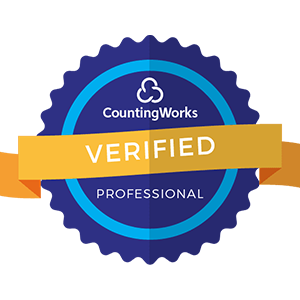
In today's fast-paced and ever-evolving business landscape, organizations are facing unprecedented challenges when it comes to attracting, developing, and retaining top talent. With the rise of new technologies, shifting demographics, and changing employee expectations, traditional approaches to workforce management are no longer sufficient. To stay ahead of the curve and secure their future success, companies must adopt a more strategic and proactive approach to talent management — and that's where Strategic Workforce Planning comes in.

Strategic Workforce Planning (SWP) is a holistic and data-driven approach to aligning an organization's talent strategy with its overarching business objectives. It involves:
In essence, SWP is about ensuring that an organization has the right people with the right skills in the right roles at the right time to achieve its strategic goals. It's a continuous process that requires close collaboration between HR, business leaders, and other key stakeholders to anticipate and proactively address workforce challenges before they impact the bottom line.

In today's business environment, the ability to effectively manage and optimize the workforce is a critical differentiator. Here are just a few reasons why SWP has become a top priority for forward-thinking organizations:
As the economy continues to rebound and competition for top talent intensifies, companies that fail to take a strategic approach to workforce planning risk falling behind. According to a recent survey by ManpowerGroup, 69% of employers globally are struggling to fill roles, with IT, sales, and engineering positions being the hardest to recruit for. To win the war for talent, organizations must be proactive in identifying and addressing skill gaps, developing compelling employee value propositions, and creating a strong employer brand that resonates with top candidates.
The rise of automation, artificial intelligence, and other disruptive technologies is transforming the nature of work and the skills required to succeed. According to the World Economic Forum, by 2025, 50% of all employees will need reskilling as adoption of technology increases. To stay ahead of the curve, organizations must continuously assess their workforce's skills and capabilities, identify emerging skill requirements, and invest in targeted upskilling and reskilling programs to ensure their talent remains relevant and competitive.
As millennials and Gen Z make up an increasingly large share of the workforce, employee expectations around flexibility, purpose, and career development are evolving. According to a recent study by Deloitte, 77% of millennials say that having a positive work culture is very important to them, and 76% view a "work from anywhere" policy as important. To attract and retain top talent, organizations must create employee experiences that align with these changing expectations and foster a culture of continuous learning, growth, and purpose.
Numerous studies have shown that diverse and inclusive teams outperform homogeneous ones in terms of innovation, problem-solving, and overall business performance. According to McKinsey, companies in the top quartile for gender diversity on executive teams are 25% more likely to have above-average profitability than companies in the fourth quartile. To reap the benefits of diversity, organizations must take a strategic approach to recruiting, developing, and advancing underrepresented talent and creating an inclusive culture where all employees can thrive.
In today's volatile and uncertain business environment, the ability to quickly adapt to changing market conditions and customer needs is critical. According to Gartner, organizations that are able to reallocate talent in response to changing business needs are 2.2 times more likely to outperform their peers. To build a more agile and resilient workforce, organizations must adopt flexible staffing models, invest in cross-training and upskilling, and foster a culture of continuous learning and adaptability.
How to Implement Strategic Workforce Planning in Your Organization
Implementing SWP requires a structured and collaborative approach that engages key stakeholders across the organization. Here are the key steps to getting started:
The first step in SWP is to gain a deep understanding of the organization's overarching business strategy, goals, and priorities. This involves working closely with business leaders to identify the key drivers of success, the potential disruptors on the horizon, and the critical capabilities required to execute the strategy. By aligning workforce planning with business strategy, HR can ensure that talent initiatives are directly tied to business outcomes and are viewed as a strategic enabler rather than an administrative function.
The next step is to gather and analyze data on the current state of the workforce, including headcount, skills, demographics, performance, engagement, and attrition. This data can be used to identify trends, patterns, and potential risk areas, as well as to benchmark against industry peers and best practices. By leveraging workforce analytics, organizations can gain a more objective and data-driven view of their talent strengths and weaknesses and make more informed decisions about where to invest resources.
Based on the business strategy and workforce analytics, the next step is to project future talent needs and identify potential gaps. This involves:
By taking a forward-looking view of talent needs, organizations can proactively address potential gaps and ensure they have the right talent in place to drive future success.
Based on the identified talent needs and gaps, the next step is to develop targeted talent strategies to address them. This may include a combination of:
By developing a comprehensive and integrated talent strategy, organizations can ensure that they are taking a holistic and strategic approach to workforce management.

The final step is to implement the talent strategies and monitor progress against key metrics and milestones. This involves:
By taking a structured and data-driven approach to implementation and monitoring, organizations can ensure that their SWP efforts are delivering tangible business impact and driving continuous improvement.
In today's rapidly changing business environment, Strategic Workforce Planning is no longer a nice-to-have — it's a business imperative. By aligning talent strategy with business strategy, leveraging workforce analytics, and taking a proactive and agile approach to talent management, organizations can build the workforce of the future and secure their competitive advantage.
While implementing SWP can be a complex and challenging undertaking, the benefits are clear. Organizations that excel at SWP are better positioned to:
As HR leaders, it's our responsibility to champion SWP and make it a strategic priority for our organizations. By doing so, we can elevate HR's role as a strategic business partner and make a meaningful impact on the success of our organizations and the well-being of our employees.
So let's roll up our sleeves and get to work — the future of work depends on it!


